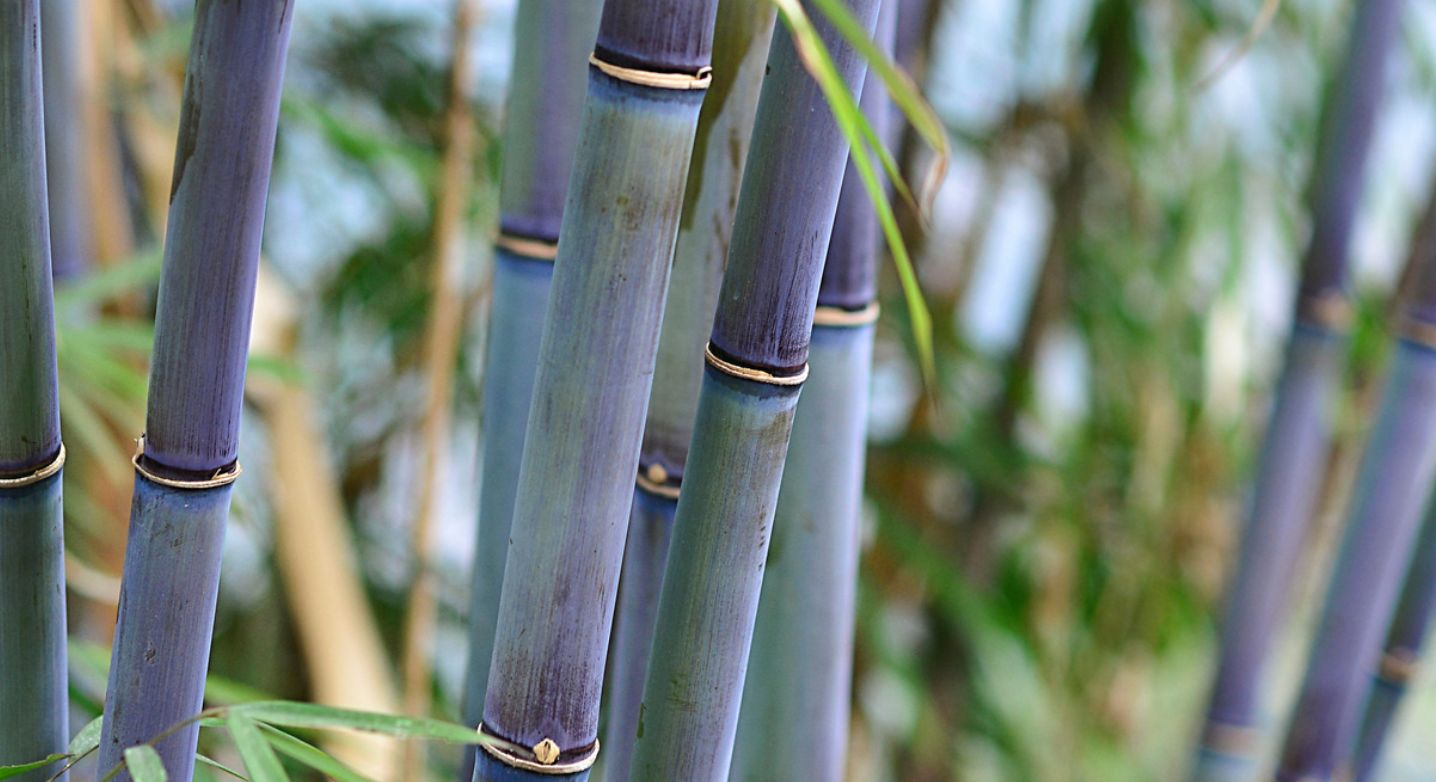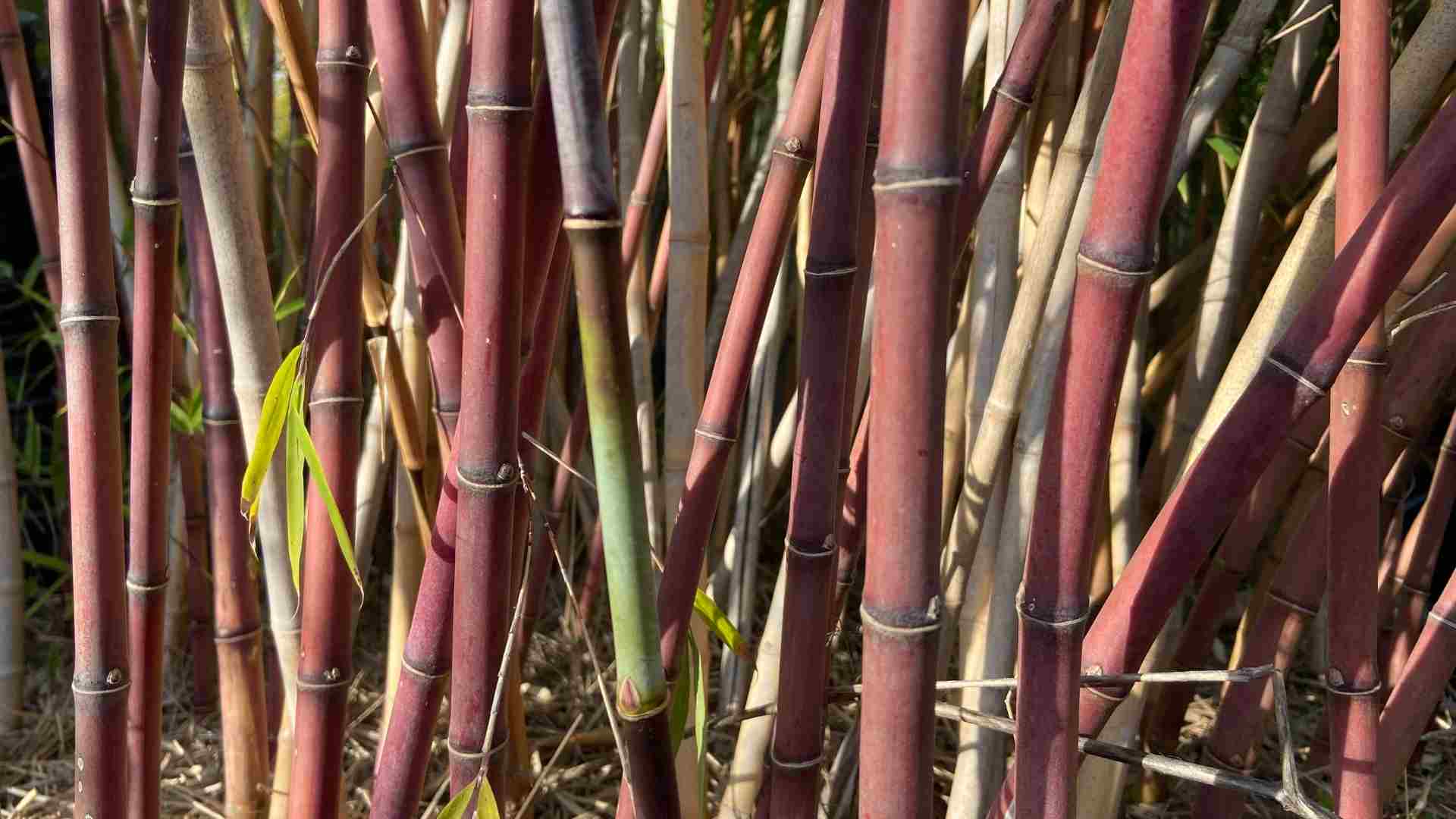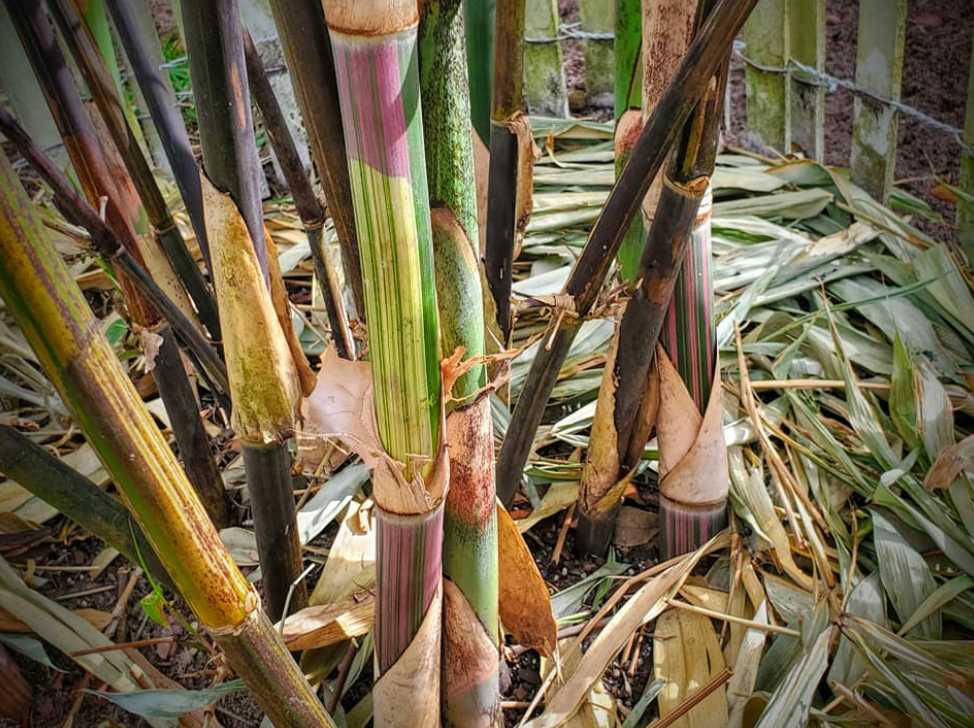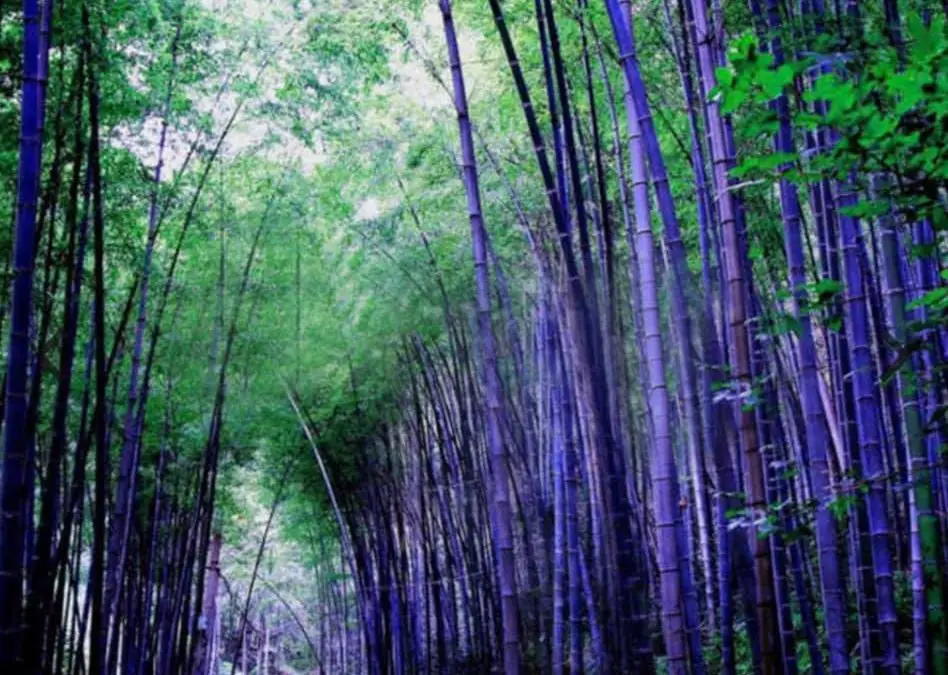Perhaps you’ve heard people whispering about it in forums and chat rooms. Maybe you’ve even seen photos of it on social media. So what exactly is Purple Bamboo? We call Purple Bamboo an “online phenomenon” because that’s the one and only place where it exists.
There are some colorful species of bamboo in nature, but the bright purple bamboo doing the rounds on social media is a hoax. Under no circumstances should you click on a link that invites you to purchase seeds of this rare and non-existent bamboo variety.
Purple Bamboo for gullible gardeners only
Unfortunately, a certain Facebook page, which purports to be promoting urban gardening, has recently taken to sharing a photo of purple bamboo. It’s pretty obvious to anyone familiar with photoshop and/or bamboo that the image has been doctored. In the realm of social media, such phony photography has become commonplace, even acceptable.
The real issue is not the caption that reads, “Rare, Purple Bamboo! Wow.” That’s just typical misinformation and sensationalism. What’s really troubling, not to mention illegal, is that they go on to provide a link where naive consumers are invited to purchase seeds of this exotic bamboo species.
Bamboo seeds are a hard thing to come by in any case. And they are even more difficult to verify. Also, the germination rate for bamboo is relatively low, compared to other seeds. And compared to propagations from cuttings, the seedlings are much slower to get established and show vigor. So realistically, it could take two or three years before the gullible gardener’s bamboo seedlings get big enough to show their true colors.
I’m guessing that whatever seeds they are selling probably are some species of bamboo. But without a bucket of paint, there’s no way it’s going to turn out purple like the photograph.
Colorful bamboo for true botanists
With nearly 2,000 species and known cultivars of bamboo, can we be sure that there’s none as purple as what they show us on Facebook?
Indeed, we can. The photo is obviously fake. And bamboo just doesn’t look like that.
BLUE BAMBOO
If you’re looking for colorful, exotic bamboo, your best bet is to purchase a pot of Bambusa chungii. This tropical, clumping species grows to nearly timber proportions, taking on a spectacular color as it matures.

In more temperate climates, we recommend shopping for some species of Himalayacalamus, namely H. hookerianus, also known as Himalayan Blue Bamboo. This clumping bamboo can tolerate much cooler temperatures, well below freezing, and keeps to a far more manageable size. Elegant culms, roughly 20 feet tall, have a gentle arch and a stunning grayish-blue aspect.
Perhaps the closest thing to purple bamboo is Drepanostachyum khasianum, sometimes called Purple Jade Bamboo. Similar to Himilayacalamus, the culms have a powdery blue appearance, turning turquoise and violet under ideal conditions. (But it’s nothing like the ultraviolet hues these fraudsters are displaying on social media.) Native to the foothills of the Himalayas, Himilayacalamus and Drepanostachyum both prefer cooler climates and mostly shade.
BURGUNDY BAMBOO
If it’s an unusually colorful bamboo you’re looking for, then be sure to check out Borinda fungosa, also known as Chocolate Bamboo, with its deep reddish-brown culms that flourish in cool, mild climates.

Despite the common moniker, Chocolate Bamboo, this eye-catching wonder actually has a color closer to strawberry or raspberry than dark chocolate.
Another striking specimen to consider, especially if you need something more cold-hardy, is Temple Bamboo, Semiarundinaria fastuosa. Sometimes called Japanese Palm Bamboo or Narihira, this medium-sized runner has slender, upright culms that can turn a lovely shade of reddish-brown, especially with increased sun exposure.
TROPICAL PURPLE BAMBOO
In a tropical setting like Hawaii or south Florida, you can try to find something more exotic like Gigantochloa sp. ‘Malaysian black’ or ‘black diamond’.

There’s also a cultivar of Bambusa textilis, or Weaver’s Bamboo, with deep purple and rosy undertones. Check with the Tropical Bamboo Nursery in Florida, and ask them for the purplicious.
Learn more and wise up
If you’re determined to get the straight scoop about bamboo, you’ve come to the right place. You might also find these articles useful and informative.


























I’m suspicious about the bamboo plants, they have been growing nearby thickly and I’m hoping to plant some seeds for two breeds Purple bamboo and some Jumbo bamboo plants but I don’t know how deep they would keep dropping roots so it is hard to find where they belong over here with Well water.
So you ordered seeds online that were labeled “purple bamboo” and “jumbo bamboo”? Yes, I would be extremely suspicious. Let us know what germinates!